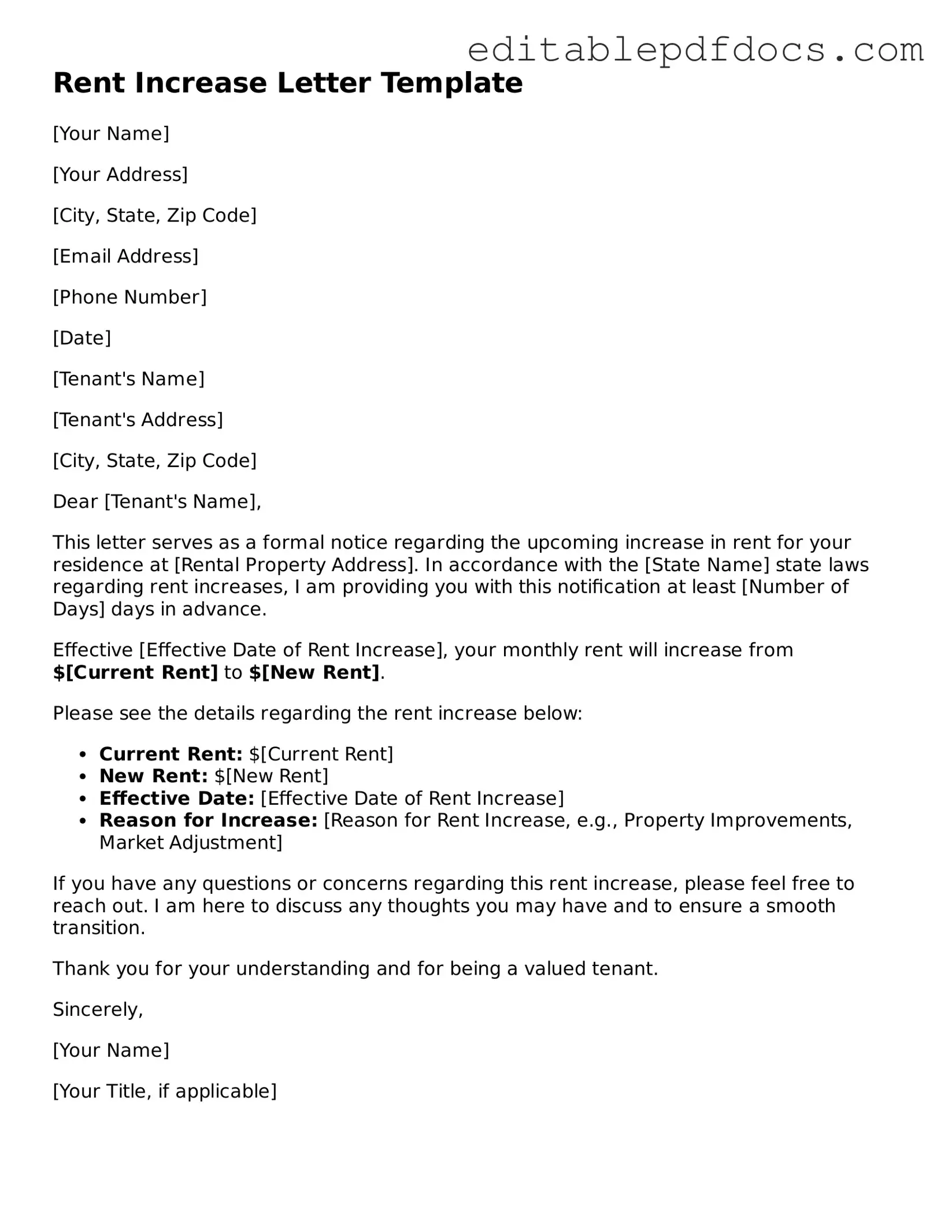Free Rent Increase Letter Document
A Rent Increase Letter is a formal notification provided by landlords to tenants, informing them of an upcoming increase in their rent. This document outlines the new rental amount and the effective date of the change, ensuring that tenants are aware of their financial obligations. For landlords and tenants alike, understanding this form is essential for maintaining clear communication and compliance with rental agreements.
To take the next step, please fill out the form by clicking the button below.
Open Editor Now
